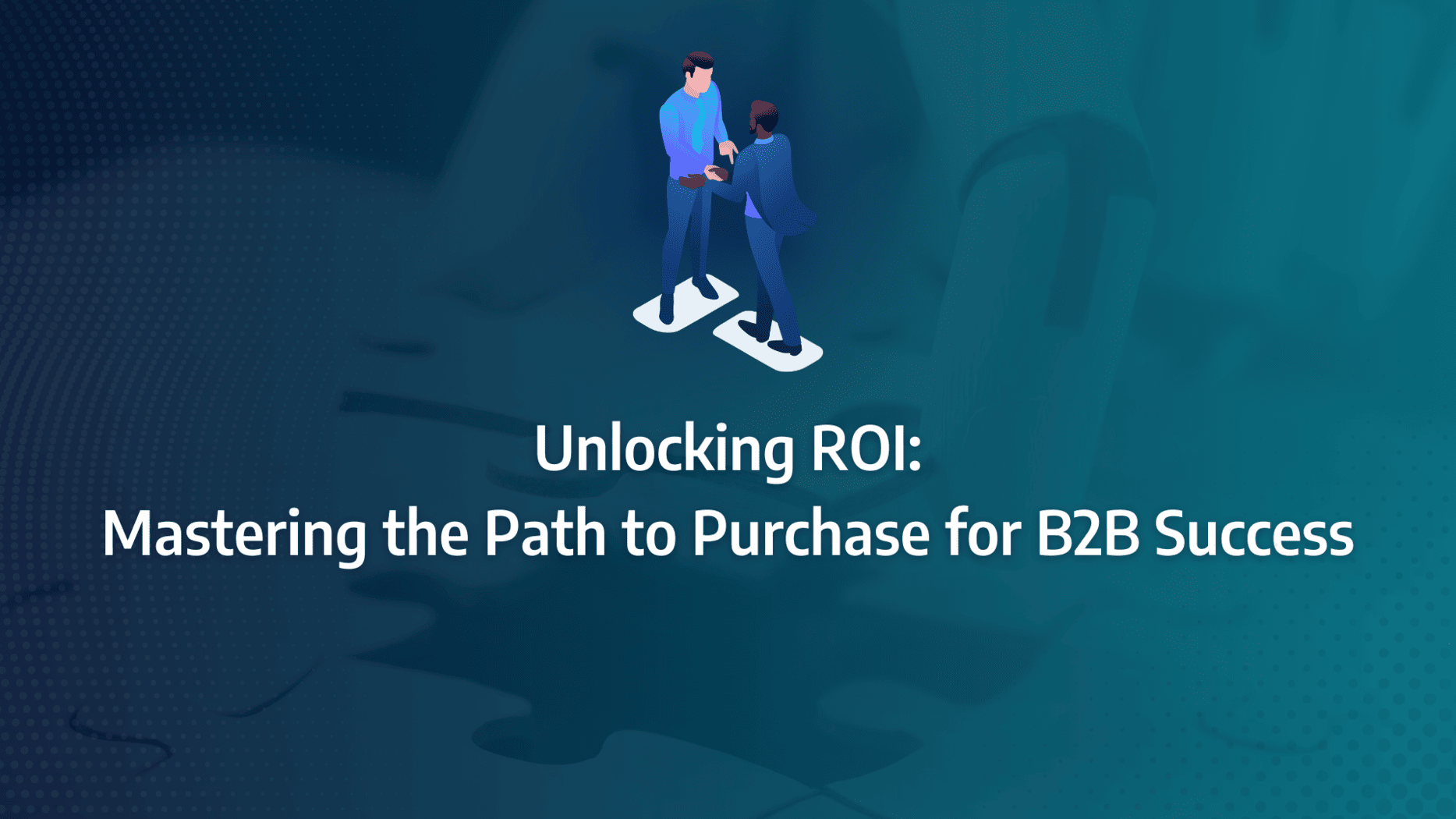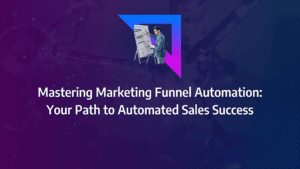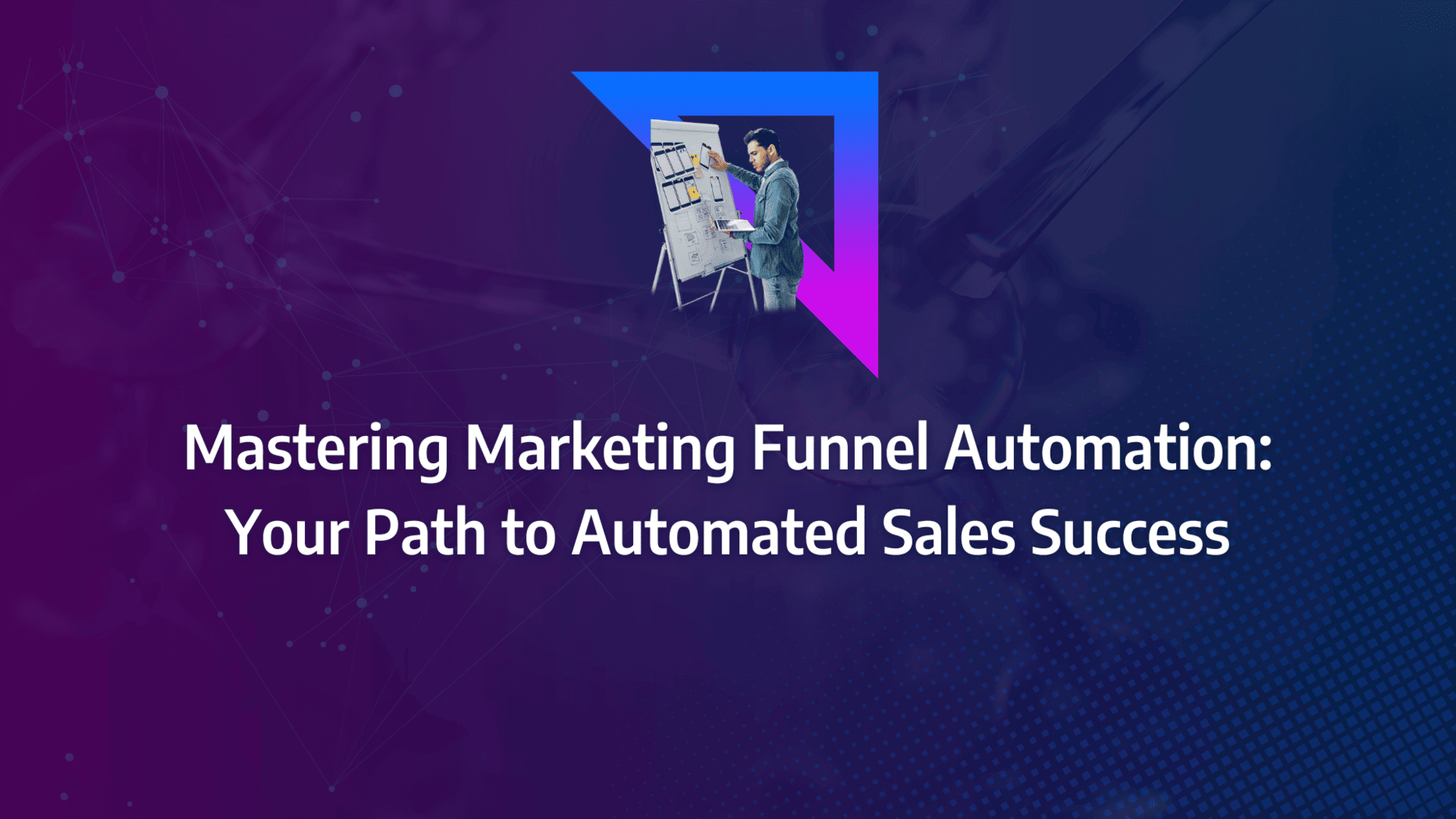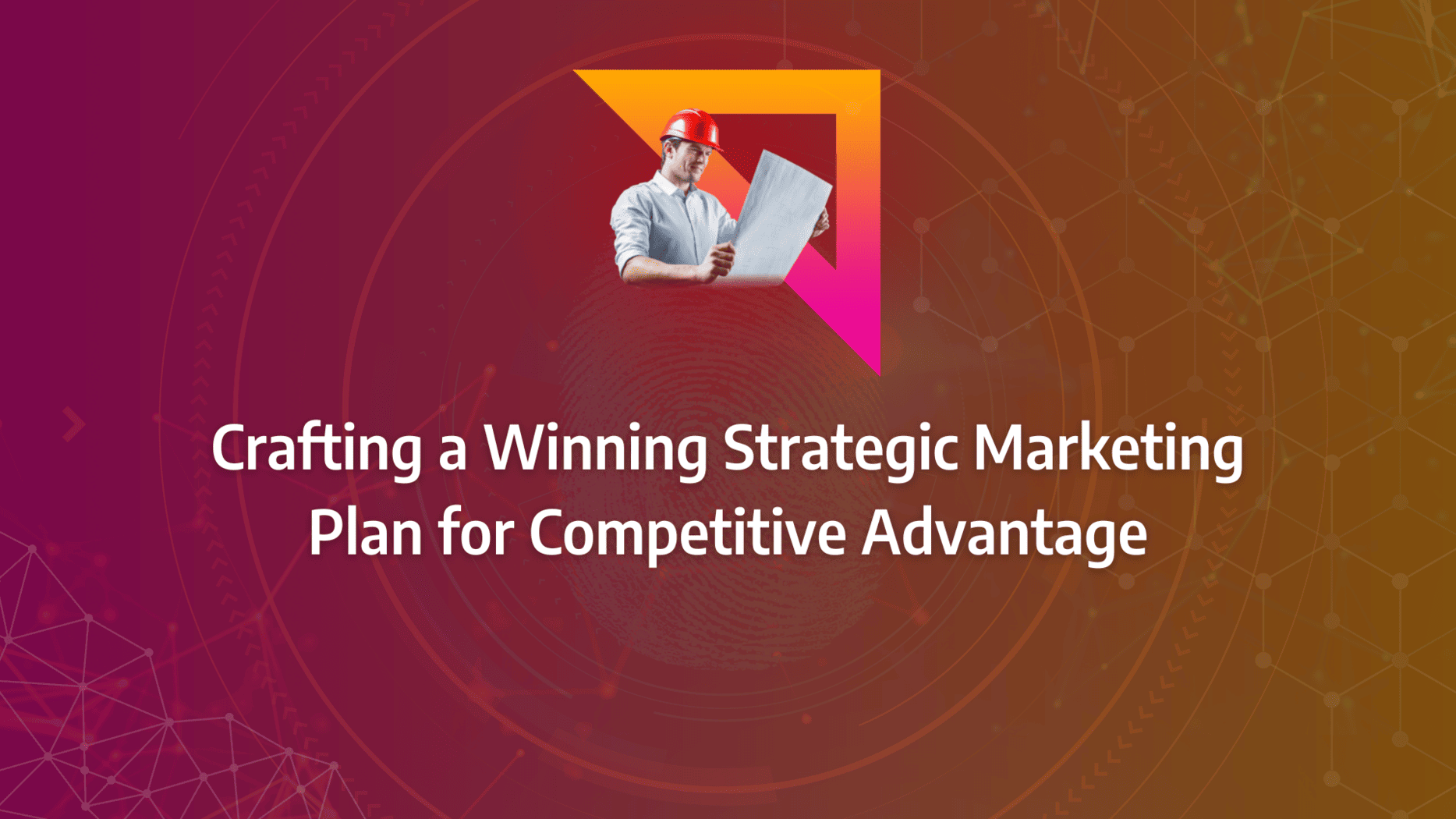Ensuring a seamless customer journey is more critical than ever. Yet, many businesses unknowingly stumble over key stages in the path to purchase, leading to missed opportunities and diminished returns. Have you ever wondered why some leads lose interest just before they’re ready to convert? Or why even the most promising prospects sometimes fall through the cracks?
The secret often lies in understanding and optimising the subtle nuances of the path to purchase. In this post, we’ll delve into the intricate stages of the path to purchase, revealing actionable strategies that you can implement to guide your prospects smoothly from awareness to decision—and beyond.
- Map out your path to purchase: Break down the customer journey into distinct stages—awareness, consideration, decision, and post-purchase—to identify and optimise each touchpoint.
- Leverage data analytics: Use data to understand customer behaviour at every stage, enabling you to refine your strategy and address pain points that may hinder conversions.
- Personalise your content: Tailor your messaging and content to resonate with your audience at each stage of the path to purchase, ensuring relevance and engagement.
- Align marketing and sales efforts: Ensure that both teams are working together seamlessly to provide a consistent and effective customer experience across all touchpoints.
- Integrate digital and offline channels: Create a cohesive customer journey by synchronising your digital and offline marketing efforts, providing a seamless experience for your prospects.
- Continuously monitor and adjust: Regularly review the effectiveness of your path to purchase strategy, using customer feedback and data insights to make necessary adjustments.
- Focus on the post-purchase stage: Don’t neglect the importance of customer retention—optimise the post-purchase experience to build long-term loyalty and advocacy.
What is the Path to Purchase Versus the Customer Journey?
Definition of the Path to Purchase
In the relentless quest for growth, marketers often experiment with every available channel and campaign type, hoping something will resonate. This trial-and-error approach can lead to a data overload, especially in our digital era where the number of touchpoints and customer journeys has exponentially increased. However, don’t worry—this blog will clarify the concept of the path to purchase and how to leverage it for marketing optimisation.
In this post, we will cover:
- What the path to purchase is
- How you can use the path to purchase to optimise your marketing strategy
The path to purchase describes the journey a user undertakes across various channels and campaigns, transforming from a prospect into a customer. This journey, often referred to as the customer journey, typically consists of three main stages: the awareness stage, the consideration stage, and the decision stage.
Each stage of the customer path to purchase involves multiple touchpoints. For example, according to Think with Google, a customer journey for products like flights can comprise up to 500 touchpoints.
Path to Purchase vs Customer Journey
Understanding the difference and correlation between the path to purchase and the customer journey is fundamental for modern marketing. By grasping how these concepts work in tandem, marketers can better comprehend the behaviours of their local customers.
The path to purchase encompasses the series of channels customers use or are exposed to before making a purchase. These channels include emails, apps, search engines, brand websites, loyalty programmes, review platforms, and social networks. Google highlights that these “micro-moments” present opportunities for marketers to attract and retain customers even after an in-store purchase. The goal is to ensure every touchpoint in the customer’s journey is prepared for immediate activation.
Conversely, the customer journey focuses on the consumer’s experiences while purchasing from a brand. It involves the customer’s actions within these channels that either advance them along the path to purchase or cause them to abandon it. By understanding these intent-driven moments, marketers can fine-tune their efforts to improve the overall purchasing experience.
Our modern devices have conditioned us to expect instant results from brands. These micro-moments are crucial for marketers to be contextual, valuable, and influential, fostering continuous interest in their products. The objective extends beyond making a single sale—it’s about ensuring customers return repeatedly.
In today’s landscape, real-time responsiveness and communication are paramount. Mobile customers have set higher expectations for brands, with Google reporting a 34-fold increase in “near me” searches since 2011. Brands must optimise every local channel on the path to purchase to deliver value when and where customers need it most. Even for brands with nationwide locations, localised content will define their success.
The brands poised to succeed tomorrow will not only meet the demands of micro-moments reactively but also create them proactively.
What Matters Most?
Mapping out your customers’ journeys by understanding their pain points allows for the creation of targeted content that resonates with them. We have discovered that aligning marketing and sales teams ensures a seamless experience as customers transition from interest to purchase, which is critical for conversion. Typically, focusing on the decision-making process of buyers helps tailor sales approaches effectively, leading to improved outcomes.Get In Touch
An Overview of the Path to Purchase
How Has the Path to Purchase Changed?
In our fast-paced, digital world, instant access to information has become the norm. However, despite the general trend towards impatience and shortened attention spans, the process of making purchasing decisions has actually become more prolonged. This is particularly true in the realm of e-commerce, where the path to purchase has lengthened significantly.
One major factor contributing to the extended customer path to purchase is the use of multiple devices. Consumers often switch between smartphones, tablets, and desktops throughout their shopping journey. This multi-device behaviour makes the buying experience more complex and time-consuming.
Additionally, the proliferation of marketing channels has changed the landscape of the path to purchase. In the past, marketing was limited to billboards, radio, TV, and newspapers. While these methods still exist, today’s consumers encounter marketing across a vast array of platforms, including social media, search engines, and mobile apps.
Consumer scepticism has also increased, largely due to the boom of e-commerce. With the vast number of products available online, many of which cannot be inspected firsthand, shoppers have become more cautious. This scepticism leads to a greater reliance on reviews and word-of-mouth recommendations, further elongating the path to purchase. Consumers now spend considerable time reading reviews, participating in discussion forums, and seeking advice from peers before committing to a purchase.
How Visual Content Can Be Used in the Path to Purchase
As eCommerce spending continues to surge year after year, it is evident that today’s consumers are increasingly comfortable with purchasing from new brands online. For these consumers, the path to purchase is heavily influenced by visual content.
A quick Google search will demonstrate this phenomenon. What do you see?
- Product photos
- Brand logos
- Star ratings and reviews
- Video thumbnails
Visual content dominates today’s search results, capturing attention before users even begin to sift through a list of links. This is because seeing truly is believing.
To convert modern customers, brands must adhere to the principle of “show, don’t tell.” This approach explains why creating and curating visual content remained a top priority for businesses in recent years.
Consider this real-world scenario: you’re planning a trip to Disney Springs and need to choose a place for dinner. You start with a simple Google query—“places to eat at Disney Springs.” Faced with numerous options, you rely on Google ratings and restaurant snapshots to narrow down your choices.
As you scroll through customer photos, you get a clear idea of the menu and the restaurant’s atmosphere. Customer reviews provide insights into what to expect and recommend which menu items to try or avoid.
Effective online selling hinges on creating a positive customer experience. Through visual content, especially user-generated content, businesses can craft authentic experiences that ultimately convert customers. This example highlights just one of many ways visual content enhances the customer path to purchase.
Best Practices for the Path to Purchase
Product Pages
In the online shopping environment, it’s crucial that all the information a customer needs about a product is easily accessible with just a few clicks. This includes details like item descriptions, directions, ingredient lists, and sizing, which provide valuable insights to the consumer.
Your product pages are often the first point of contact a shopper has with your brand and can significantly influence their purchase decision. Consumers are unlikely to trust a product page that lacks detailed information or appears outdated. Ensuring your webpages are user-friendly and offer comprehensive product details is essential for successful eCommerce.
Source: Gartner
Chatbots
Much like in-store shoppers who seek human interaction during their purchase, online shoppers desire a similar experience from the comfort of their homes. Implementing a chatbot on your website can fulfil this need.
A well-designed chatbot should be capable of answering basic questions and directing shoppers to a customer representative for more detailed inquiries. Just as word-of-mouth recommendations can influence in-store purchases, a chatbot can provide the personal touch needed to complete the customer path to purchase. Additionally, the chatbot can link customers directly to the “Where to Buy” feature, guiding them seamlessly to your product.
Pricing
Optimising pricing strategy is a challenge for both in-store and online environments. Online, competitive pricing is further complicated by tools that compare prices across different brands.
Creating a coupon or sale schedule for your products can help boost profits. For instance, Amazon often sends targeted deals to shoppers for items that have been in their carts for an extended period. These deals typically expire shortly after being received, encouraging a quicker purchase decision. Such sale strategies can promote impulse buying without significantly impacting profit margins, as not all consumers receive the same deal.
What are the four critical stages in leveraging the path to purchase for growth?
How to Leverage the Path to Purchase as a Path to Growth
The path to purchase comprises four critical stages:
Stage 1: Purchase Trigger: The journey begins with a purchase trigger. At this point, the consumer might already have pre-trigger brand preferences. These preferences set the stage for their exploration.
Stage 2: Exploration and Evaluation: In this stage, consumers actively explore and evaluate their options. Brand preferences can shift significantly as they gather more information and compare alternatives.
Stage 3: Decision Making: Here, the consumer transforms into a ‘shopper’ and makes their final choice at the point of sale. This involves two crucial decisions: selecting the retailer or channel and choosing the product or brand.
Stage 4: Post-Purchase Experience: After the purchase, the actual product experience influences the consumer’s mental networks, shaping their brand preferences for future purchases.
Throughout these stages, consumers encounter various touchpoints that reinforce or disrupt their mental networks, thereby impacting their purchase decisions. Touchpoints can include TV adverts, social media interactions, store displays, and more.
Common Challenges When Navigating the Path to Purchase
Long Customer Journeys
B2B customer journeys can be particularly lengthy. Depending on the ticket size or business nature, a purchase decision can take from several weeks to several months. Accurately tracking such extended journeys can be challenging. If most of the customer journey occurs on your website and controlled channels, a first-party cookie-based tracking implementation can effectively track the entire path to purchase.
Omni-channel Engagement
Customers engage across multiple channels, making it challenging to track and attribute each touchpoint accurately. For instance, a customer might find your business via a LinkedIn post, then search for it on Google, and eventually land on your website. Proper attribution might still only lead back to the Google search. It is advisable to track engagement across all channels, using UTM parameters and referrer data. For significant channels like social media, a dedicated tracking solution can be useful, but general UTM parameter tracking can also be effective.
Multiple Decision Makers
In B2B purchases, several decision-makers are often involved, complicating the tracking process. Each decision-maker may have their journey and associated tracking cookies. One solution is to track the account (the business) and group the different decision-makers under the same account for a comprehensive path to purchase analysis. Typically, one primary decision-maker can be tracked, but if multiple key decision-makers are frequently involved, this strategy must be implemented.
Our Tactical Recommendations
From our experience, creating content that proactively addresses common objections in the purchasing process can significantly alleviate customer concerns. Analysing user behaviour data to identify dro
p-off points enables timely refinements in the purchase path. Additionally, implementing account-based marketing strategies personalises the path to purchase for key accounts, enhancing engagement and conversion rates.Get In Touch
Questions Your Brand Should Be Asking
1. What are the Dominant Paths in the Category?
Understanding the dominant paths to purchase in your category helps in budget allocation. It allows marketers to determine how much to invest in influencing the path to purchase versus creating strong pre-trigger brand preferences. In many categories, consumers do not engage in active exploration or evaluation stages but rather rely on auto-pilot or impulse buying. Here, the trigger and purchase occur almost simultaneously, necessitating a different investment strategy.
2. What’s the Reach and Impact of Different Touchpoints in the Path to Purchase?
Marketers should model and simulate the impact of various touchpoints along the path to purchase. The insights gained from such exercises are invaluable for guiding the allocation of resources across these touchpoints effectively. This ensures that every interaction point is optimised to drive conversions.
3. What’s the Role of Touchpoints in the Path to Purchase?
Each touchpoint along the customer path to purchase plays a distinct role. Some touchpoints reinforce brand memory (i.e., how frequently a brand is recalled by consumers), while others serve as sources of inspiration or provide guidance on product usage. By understanding these roles, marketers can decide on the most effective content to deploy at each touchpoint.
4. What are the Pain Points in the Path to Purchase?
Identifying and addressing consumer pain points is crucial. Recognising these challenges along the path to purchase enables marketers to innovate and refine their strategies, thereby enhancing the overall customer experience. This proactive approach can significantly influence the path to purchase marketing strategy and improve conversion rates.
5. How Does Your Brand Perform on the Path to Purchase Relative to the Competition?
Evaluating your brand’s performance on the path to purchase, both in general and at specific touchpoints, is essential. This involves conducting a SWOT analysis to identify strengths, weaknesses, opportunities, and threats. Such an analysis provides guidance for defining brand-specific priorities and strategies.
The digitalisation of the shopping experience has created new opportunities for marketers to influence the path to purchase. By asking the right questions, thinking beyond traditional mass marketing, and embracing touchpoint moments, marketers can thrive in this dynamic retail environment and drive significant brand growth.











